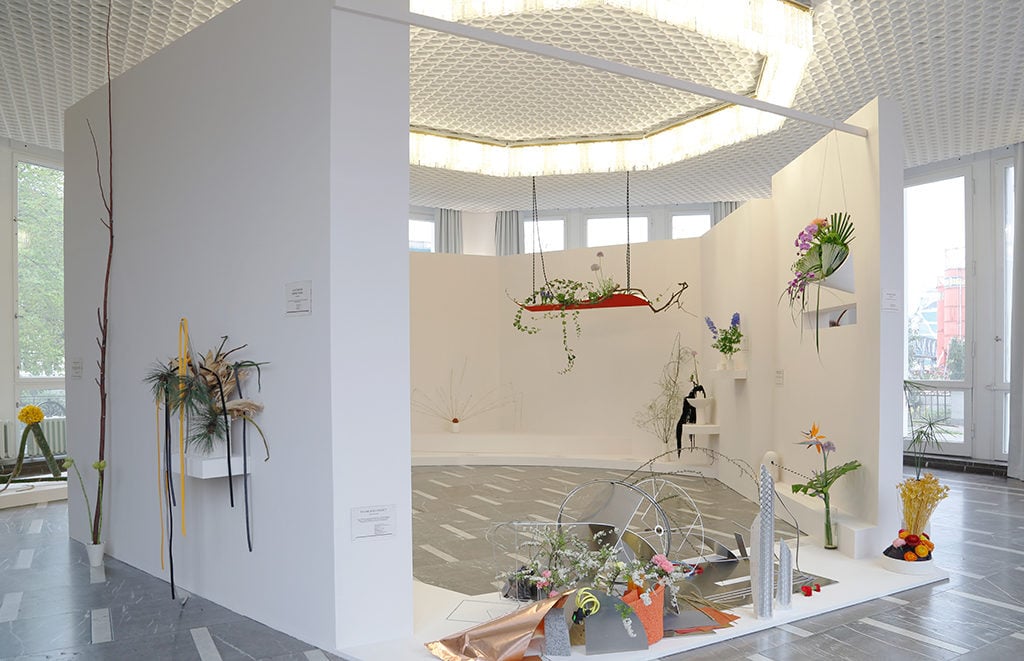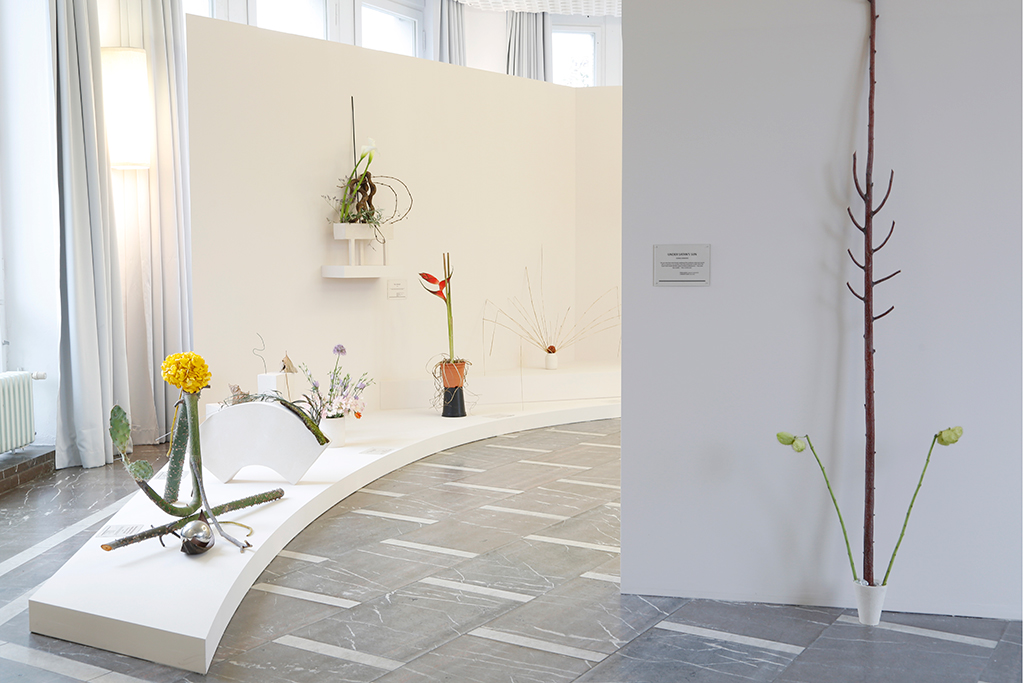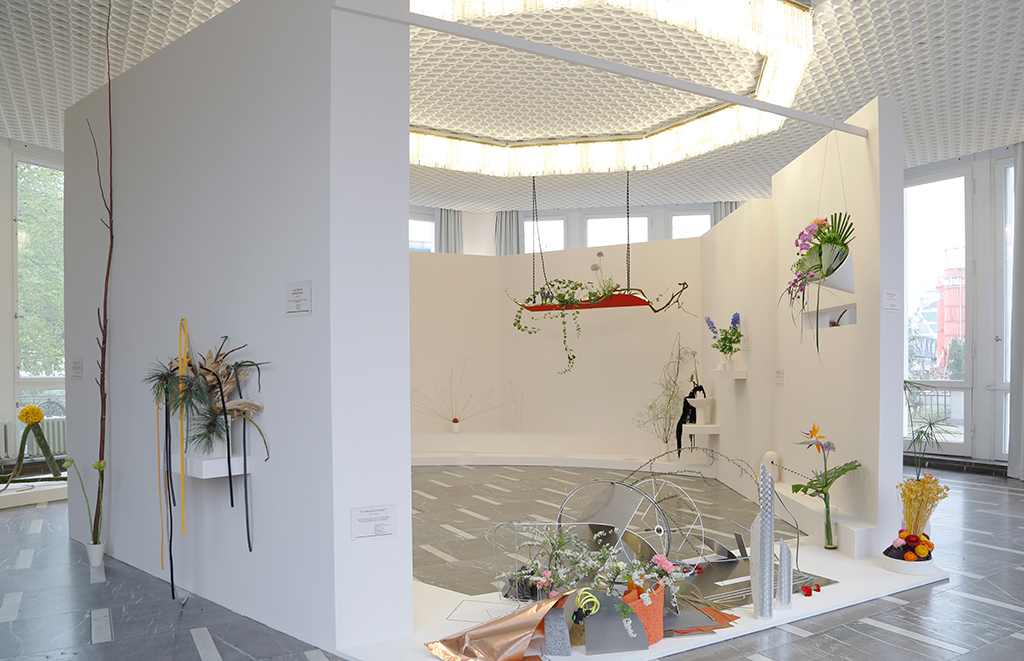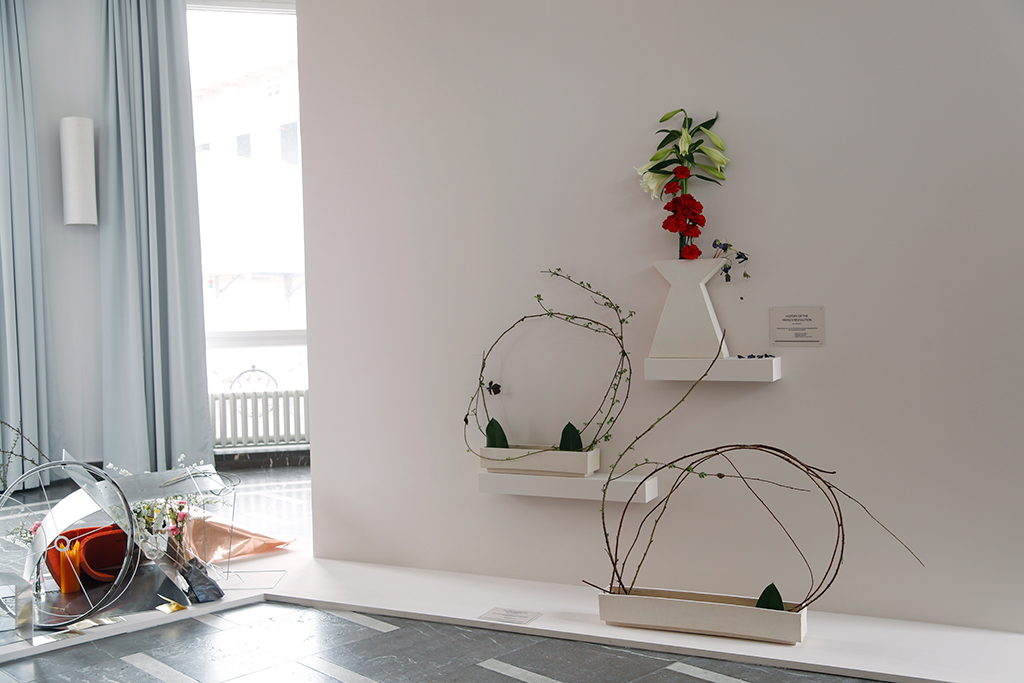Art & Exhibitions
Camille Henrot Transmutes Philosophy into Flower Sculptures at Berlin’s Schinkel Pavillon
The breakout star of 2013's Venice Biennale dazzles in her Berlin debut.

The breakout star of 2013's Venice Biennale dazzles in her Berlin debut.

Alexander Forbes


Installation view, Camille Henrot, Snake Grass, Schinkel Pavillon, Berlin (2014).
© Camille Henrot, Galerie Kamel Mennour, Paris.
In Venice last year Camille Henrot showed the world how it came to be. Her piece, a schizophrenic video montage centered on the desktop of her Mac titled Grosse Fatigue (2013), won her the Silver Lion and catapulted her to art world prominence. Now in Berlin, perhaps unsatisfied with civilization’s post-Big Bang progress, she’s trying to change it—with flowers.
Henrot’s Schinkel Pavillon show is her first institutional presentation in Germany and centers on new additions to her series of ikebana-inspired sculptures, “Is it possible to be a revolutionary and to like flowers?” (2011-). Portions of the series will also travel to the New Museum in New York for her first US survey, opening May 7. In this case, they are presented in the pavilion’s octagonal, vitreous main gallery and are accompanied by the video work, The Strife of Love in a Dream (2011), shown in the building’s subterranean former bar—which has never before been used for exhibitions.

Installation View Camille Henrot, Snake Grass, Schinkel Pavillon, Berlin (2014).
© Camille Henrot, Galerie Kamel Mennour, Paris.
Each piece is inspired by a quotation pulled from a book in Henrot’s personal library. Some humorous, others profound, they circle questions of post- and neo-colonialism, alterity, and social structuration. Along with the names of plants, flowers, and other materials used to make the ikebana works themselves, the quotes are printed on placards next to the sculptures. Henrot practices the most modern form of ikebana, moribana, which loosens the rules surrounding the ancient Japanese art to allow non-living elements to be introduced into the sculptures.
The practice in all its forms is most simply characterized by the attention paid to stems and the very modern question of balancing form, line, and color. (This, in contrast to Western floral arrangement’s traditional focus on the blooms themselves.) Henrot uses urban detritus like bike wheels with their spokes removed and metal sheeting in one new work’s composition—appropriately that which refers to Walther Benjamin’s unfinished opus on urban decay, The Arcades Project—just as gracefully as she incorporates a lotus into another (The Human Condition, Hannah Arendt, 2014).
Typified by the Benjamin work, the compositions themselves are pleasingly quick to connect to their source. History of The French Revolution, Jules Michelet (2012) sees the tricolore translated into blue, white, and red blooms. Beyond The Pleasure Principle, Sigmund Freud (2012) is nothing if not phallic. These works provide touch points that lead one through the show, Henrot’s library, and indeed the intellectual revolution of sorts she sets forth for her viewer. Flowers, rather than antithetical to revolutionary positions, may just be safe enough in their bourgeois Western associations—ikebana itself is rather more populist in its reach—to recruit followers down her path much farther than they might have otherwise chosen to trek.

Installation View Camille Henrot, Snake Grass, Schinkel Pavillon, Berlin (2014).
© Camille Henrot, Galerie Kamel Mennour, Paris.
Descending to the rather dark and dank basement brings forth a dramatic shift in tone, but Henrot’s focus on all forms of otherness remains steadfast. The Strife of Love in a Dream (2011) was, coincidentally or not, the work that is said to have caused the Venice Bienniale’s 2013 artistic director and New Museum head Massimiliano Gioni to fall for Henrot’s work. The film swaps Grosse Fatigue’s Internet-driven aesthetic for the documentary, but doesn’t lose the former’s snappy pace. Clips of Indian pilgrims scaling a mountain, snakes being milked for their venom, and anti-anxiety meds being manufactured flick by at an ever-quickening pace. Its 11-minute run is accompanied by the slowly intensifying rhythmic rumble of a subwoofer.
The snake and its various metaphorical and spiritual derivations are central here. As a symbol, it is perhaps unparalleled in its consistency of signification across cultures and ideological systems. It’s curiously also one of the most ambiguous symbols. The snake or serpent stands as universally for danger and death as it does medicinal and procreative force. It’s by this fact that Henrot drives home her point. The snake, whether printed on a packet of pills or held aloft in a spiritual ceremony offers fundamental cross-cultural common ground due to its unknown nature and contradictory symbolism. And, as Henrot’s work makes clear time and again, only through such known-unknowns can a non-hierarchical conversation begin.
Camille Henrot, “Snake Grass” runs through May 11 at Berlin’s Schinkel Pavillon.

Camille Henrot, The Strife of Love in a Dream (2011).
© Camille Henrot, Galerie Kamel Mennour, Paris.